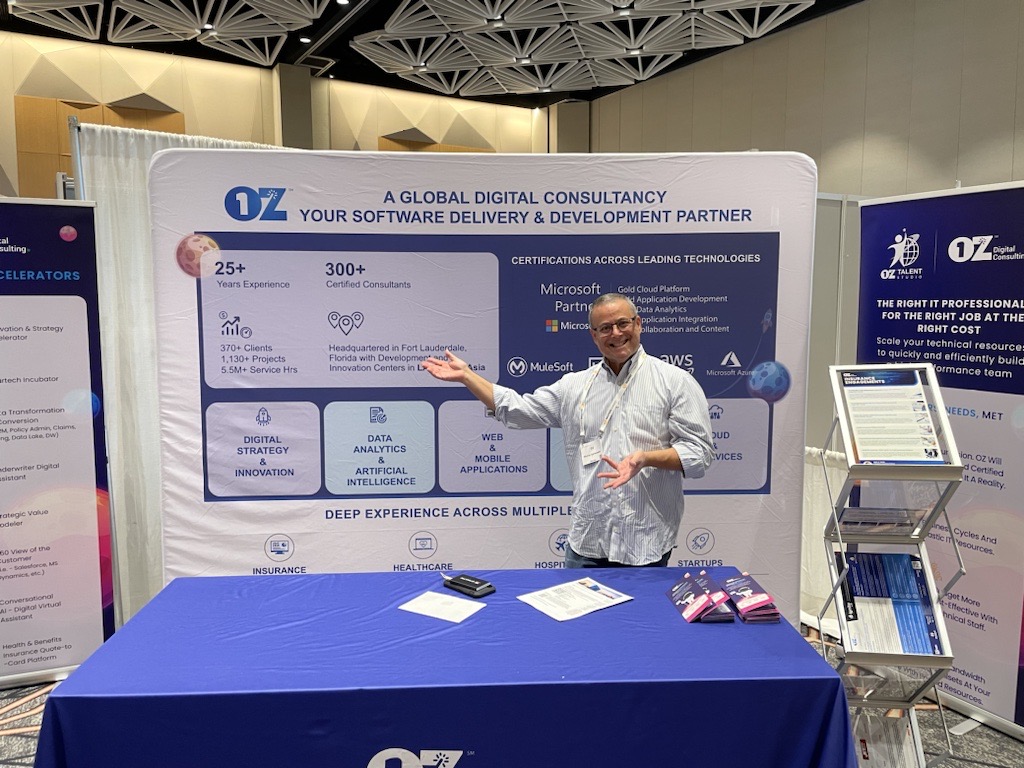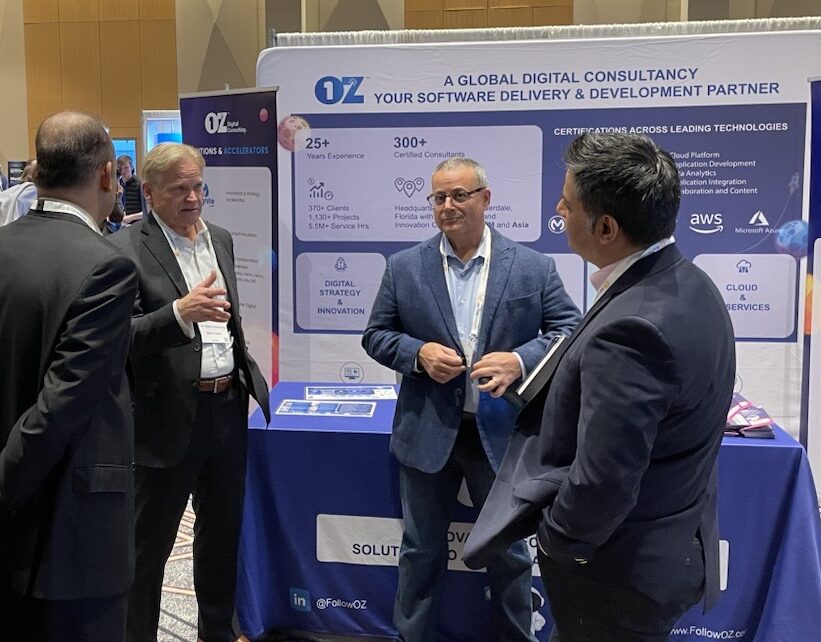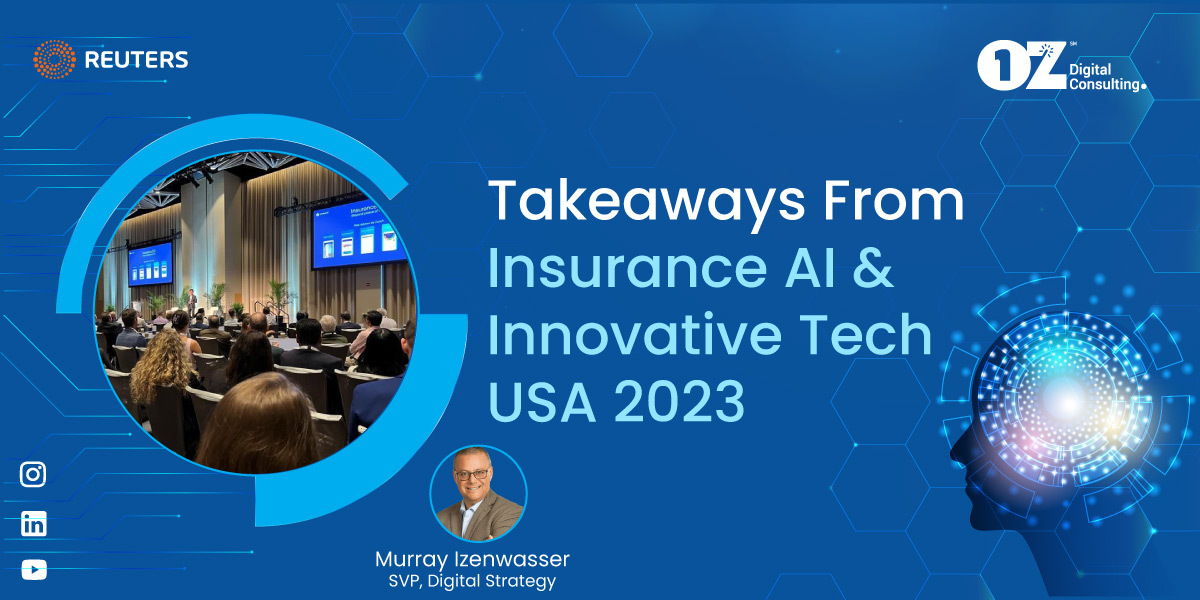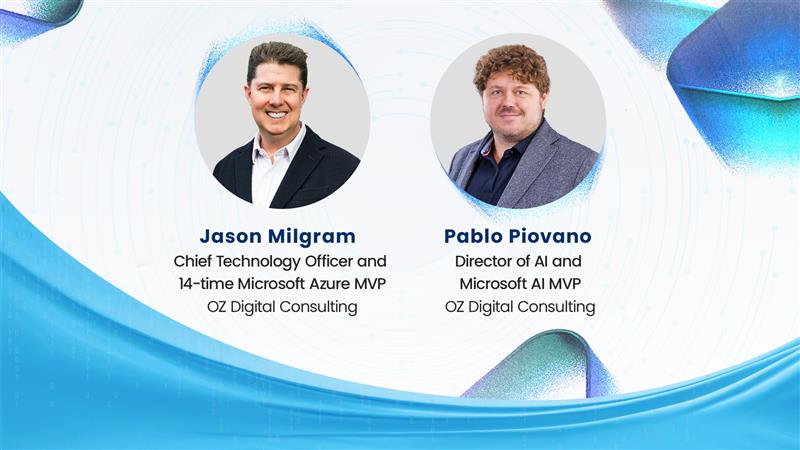
I had the opportunity of attending the Reuters Insurance AI & Innovative Tech conference. Every year, teams from across the industry come together to learn, explore, and network with peers.
This year was no different. Over 200 insurance, data, and technology experts attended — from industry giants to insurtechs, thought-leaders, and decision-makers — to share perspectives, get insights, and return with a different lens on the business.
It was great meeting them all: interacting with experts, hearing from industry leaders, and learning what’s happening in the insurance community. How are emerging technologies — AI — transforming the insurance landscape? What are carriers most excited about, and what’s next for the industry? How can we harness innovation to meet business needs across the enterprise, including within customer experience?
Here are some insights and takeaways from this year that I wanted to share with you.
AI Is the New Frontier for Insurance Innovation
AI is not coming for insurance — it is already here. Insurtechs, carriers (and brokers) are scaling their AI initiatives to solve business challenges — from unstructured data digitization and claims processing to fraud detection — and stay competitive.
The question on everyone’s mind was: how can we capitalize on AI and technology to reach the modern customer?
The consensus was to maximize all your data sources, from agents to IoT, to funnel into AI. Build volume and ensure quality that allows you to be predictive. Develop agile ecosystems through strategic adoption that support personalized, AI-powered customer experience from quote to claim. Balance artificial intelligence with human insight to seize opportunities from personalization to refined risk and streamlined claims.
While we acknowledged that AI is a game-changer for the insurance industry, we all agreed that AI should be deployed responsibly.
The Age of Pilots and Trials Is Over
Companies — even those slow to implement digital technologies — are now implementing solutions at breakneck speed. They are embracing customer experience (CX) and employee experience and moving from experimenting with “newer” technologies to integrating them into their solutions. Digital transformation has become a burning priority — many organizations are fully down the path to successful (and long-term) transformation journeys — and the momentum will likely continue. However, getting back to basics around data, process, and customer experience is potentially where a large portion of the industry will still see a “big bang,” as those may be areas many companies may still have to focus on.
4 Mistakes Ruining Your Automation Efforts (and How You Can Fix Them)

Not all automation projects are created equal. Some succeed while many fail. But why? A presentation on this topic dwelled on the four common mistakes plaguing RPA projects.
First, automating without completely understanding the process you’re trying to automate can derail your plans. Accounting for all exceptions and variations in a process is critical. That’s why processes may need to be redesigned first before automating them. Because “Automating a poorly designed process just makes bad things happen faster.”
The second mistake is not having a quantifiable business case. Building an automation business case involves quantifying the impact automation will have on critical metrics than merely identifying areas for automation.
Too often, “automation is treated as a hammer in search of a nail.” Instead of finding as many automation opportunities as possible, focus first on optimizing key processes in the best way possible.
And finally, quantifying results and ROI is important in the early days of implementation as this helps build a future business case for more resources.
While process metrics such as efficiency, throughput, and cost/effort are standard methods for measuring the impact of automation, business metrics such as customer satisfaction and revenue also need to be considered.
There’s a Hidden Opportunity in What You Already Know About Your Customers
There was a dynamic discussion around the future of insurance and the place of data and analytics. On average, most insurance companies have few touchpoints with their customers. But through data and analytics, insurers can focus their efforts on driving growth through better customer experiences. With the right tools and data, they can improve this improved customer experience through analytics and make that experience stellar.
Data can help you tell the full customer story and offer coverage that adds the most value to your business. When you look closely at every stage of your customer acquisition process, you get a better understanding of why they convert — and why they don’t.
When you know why your prospects say “no,” you can make improvements and convert them to “yes.”
Everyone agreed that insurance companies make minimal investments in customer experience after they’ve acquired the customer. When it comes to growth, you must acquire and retain, but don’t forget to ask – “what else can we do?” Let your data lead the way.
Whether you attended or not, I would love to hear your thoughts. If you would like to discuss your organization’s digital transformation goals or how to integrate new technologies into your business, please reach out to me here.




